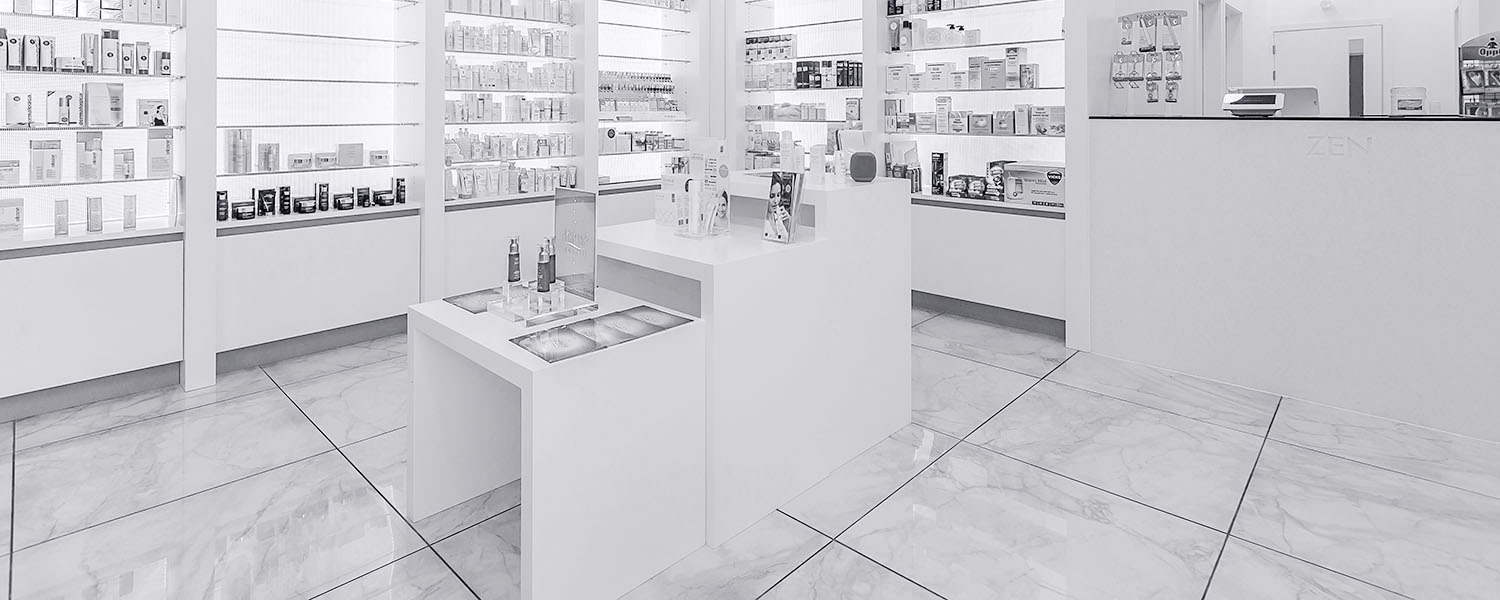About the materials in general
In a previous post we have already discussed the importance of choosing the right shelving system for your store. While you might not think about it at first, choosing appropriate materials is just as important. To increase sales and maximise profitability, you need to make an informed choice. In this post you will find everything that is worth knowing about materials. We give a brief overview of the most commonly used materials and discuss the advantages and disadvantages of each.
The most commonly used materials for retail shelving systems include glass, acrylic, metal or steel and wood. So let us see what each of these materials offer in terms of durability, versatility and design.
Glass shelves
Glass display cases and shelves offer an elegant way to display your most valuable products and items. The main advantage of using glass comes from the fact that it offers the greatest visibility for your products. Even more, shelves made of glass can make the perceived value of your products increase. Under normal use, glass shelves are also fairly durable and resistant. Nonetheless, they require more care in terms of both handling and maintenance. They are highly susceptible to shattering and chipping, and they are also quite heavy.
Acrylic display cases and shelves
Are the risks involved in using glass shelves and display cases too high for you? If you are thinking about an alternative without compromising too much in terms of viewing angles and visibility, here’s an option. Go for acrylic instead. Shelves made of acrylic weigh a lot less than those made of glass, are easy to clean and to customise. They can be moulded into various shapes and sizes and come in a number of different colours. This does not mean that they are perfect. Acrylic shelving is not meant to house heavier items, which cause them to bend. They are also more susceptible to scratching than those made of glass. The main disadvantage of acrylic shelving however remains the problem of yellowing. With time, these shelves can get a yellowish tint which means you will have to replace them from time to time.
Wood
Shelves made of wood are probably the most classic in both form and feel. Quite durable and sturdy, they can stand in nice contrast as a wall piece with the rest of the shelving used in your store. You can use wooden shelves to display almost any kind of product, but they have one main disadvantage. They significantly limit the viewing angle of the products on display. To overcome this problem, you can consider adding glass or acrylic shelves to the wooden frame.
Metal and steel shelves
Last but not least, you might also consider opting for shelves made of metal or steel. Their popularity comes from the fact that they are incredibly durable, sturdy and versatile. At the same time, they are fairly inexpensive as well. Metal is the best option is you want to display heavier items, without needing to worry about problems such as bending or deformation. They are also easy to assemble and disassemble. Nonetheless, metal shelving can be susceptible to rusting and corrosion, as well as to chipping of the protective finish. While there are available remedies for these problems, they might have a negative impact on the overall design of your store.
Overall, there are a number of shelving systems and materials you can choose from when it comes to fitting your store. While choosing the right shelving system is important, you should never dismiss the importance of selecting the right materials. Material selection, in the ideal case, should be made not only with regard to the general properties of each material, but also with regard to the type of product you want them to hold and the overall design and ambience of your store. So choose wisely.
Are you ready to implement your next retail shelving system? Contact us for more information and guidance.





